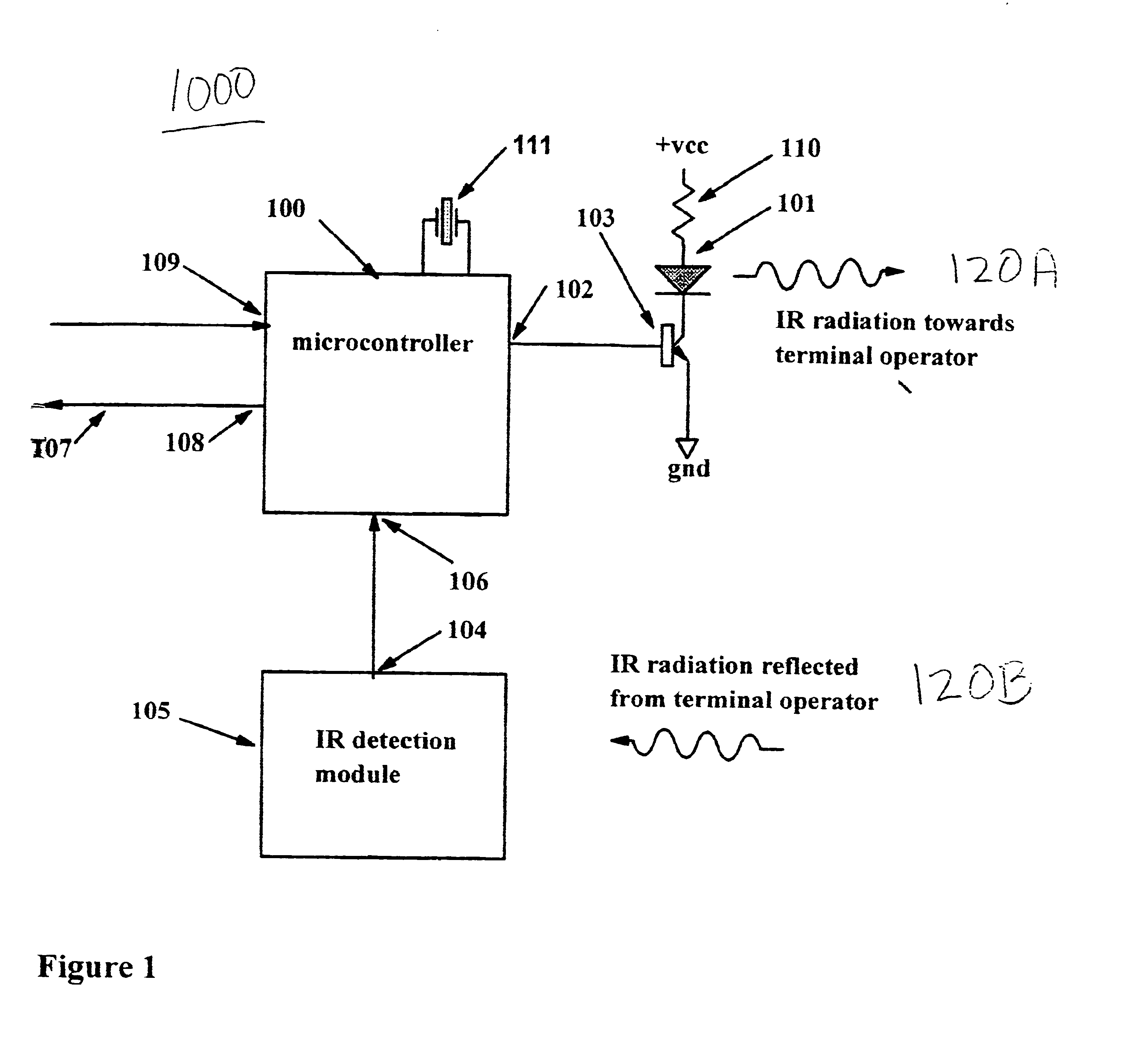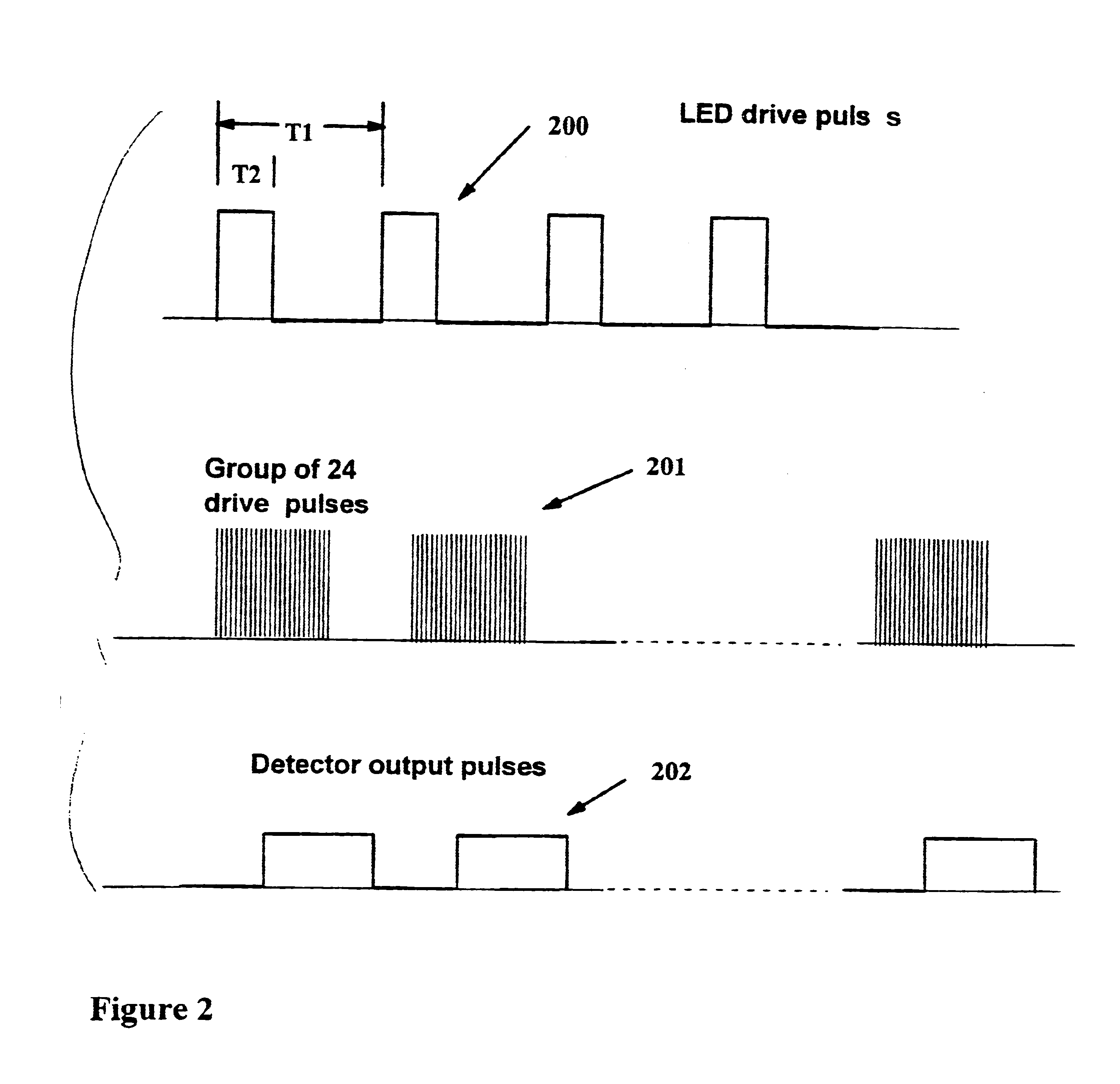Active infrared presence sensor
a technology of infrared presence and sensor, which is applied in the field of sensors, can solve the problems of pos terminal, unsatisfactory for certain applications, and annoying to have a terminal power-down
- Summary
- Abstract
- Description
- Claims
- Application Information
AI Technical Summary
Benefits of technology
Problems solved by technology
Method used
Image
Examples
embodiment
Preferred Embodiment
Generally, the invention operates with a novel method and structure in which an operator / user is detected by emitting electromagnetic (EM) radiation (e.g., preferably infrared radiation) to an area in front of a display and detecting whether an operator is present by detecting a return / reflection of the EM radiation in the form of pulses. If an operator is not detected for a predetermined time period (e.g., if the fraction of the transmitted pulses which are detected is less than a predetermined threshold), then the display is turned off (e.g., put in a "sleep" mode). By the same token, should an operator / user be detected (e.g., if the fraction of the transmitted pulses which are detected is greater than a second predetermined threshold), then the display is either rendered in an active state ("turned on") or, if already in an "ON" state, the display is maintained in the "ON" state.
Turning now to FIG. 1, a system 1000 is shown according to the present invention. ...
PUM
 Login to View More
Login to View More Abstract
Description
Claims
Application Information
 Login to View More
Login to View More - R&D
- Intellectual Property
- Life Sciences
- Materials
- Tech Scout
- Unparalleled Data Quality
- Higher Quality Content
- 60% Fewer Hallucinations
Browse by: Latest US Patents, China's latest patents, Technical Efficacy Thesaurus, Application Domain, Technology Topic, Popular Technical Reports.
© 2025 PatSnap. All rights reserved.Legal|Privacy policy|Modern Slavery Act Transparency Statement|Sitemap|About US| Contact US: help@patsnap.com



